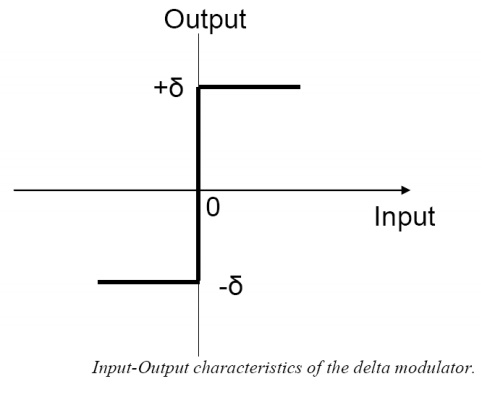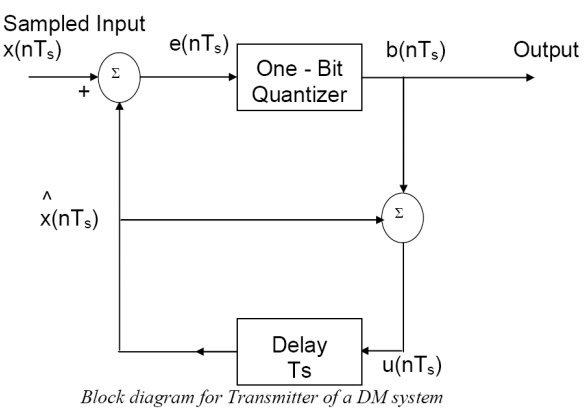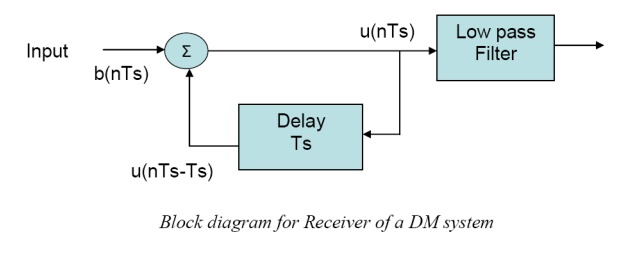Chapter: Digital Communication : Waveform Coding
Delta Modulation (DM)
Delta Modulation (DM)
Delta
Modulation is a special case of DPCM. In DPCM scheme if the base band signal is
sampled at a rate much higher than the Nyquist rate purposely to increase the
correlation between adjacent samples of the signal, so as to permit the use of
a simple quantizing strategy for constructing the encoded signal, Delta
modulation (DM) is precisely such as scheme. Delta Modulation is the one-bit
(or two-level) versions of DPCM.
DM
provides a staircase approximation to the over sampled version of an input base
band signal. The difference between the input and the approximation is
quantized into only two levels, namely, ±δ corresponding to positive and
negative differences, respectively, Thus, if the approximation falls below the
signal at any sampling epoch, it is increased by δ. Provided that the signal
does not change too rapidly from sample to sample, we find that the stair case
approximation remains within ±δ of the input signal. The symbol δ denotes the
absolute value of the two representation levels of the one-bit quantizer used
in the DM.

Let the input signal be x(t) and the staircase approximation to it is u(t).

In the
receiver the stair case approximation u(t) is reconstructed by passing the
incoming sequence of positive and negative pulses through an accumulator in a
manner similar to that used in the transmitter. The out-of –band quantization
noise in the high frequency staircase waveform u(t) is rejected by passing it
through a low-pass filter with a band-width equal to the original signal
bandwidth. Delta modulation offers two unique features:
1. No need
for Word Framing because of one-bit code word.
2. Simple
design for both Transmitter and Receiver

Disadvantage
of DM: Delta modulation systems are subject to two types of quantization error:
(1) slope
–overload distortion, and
(2)
granular noise.
Related Topics